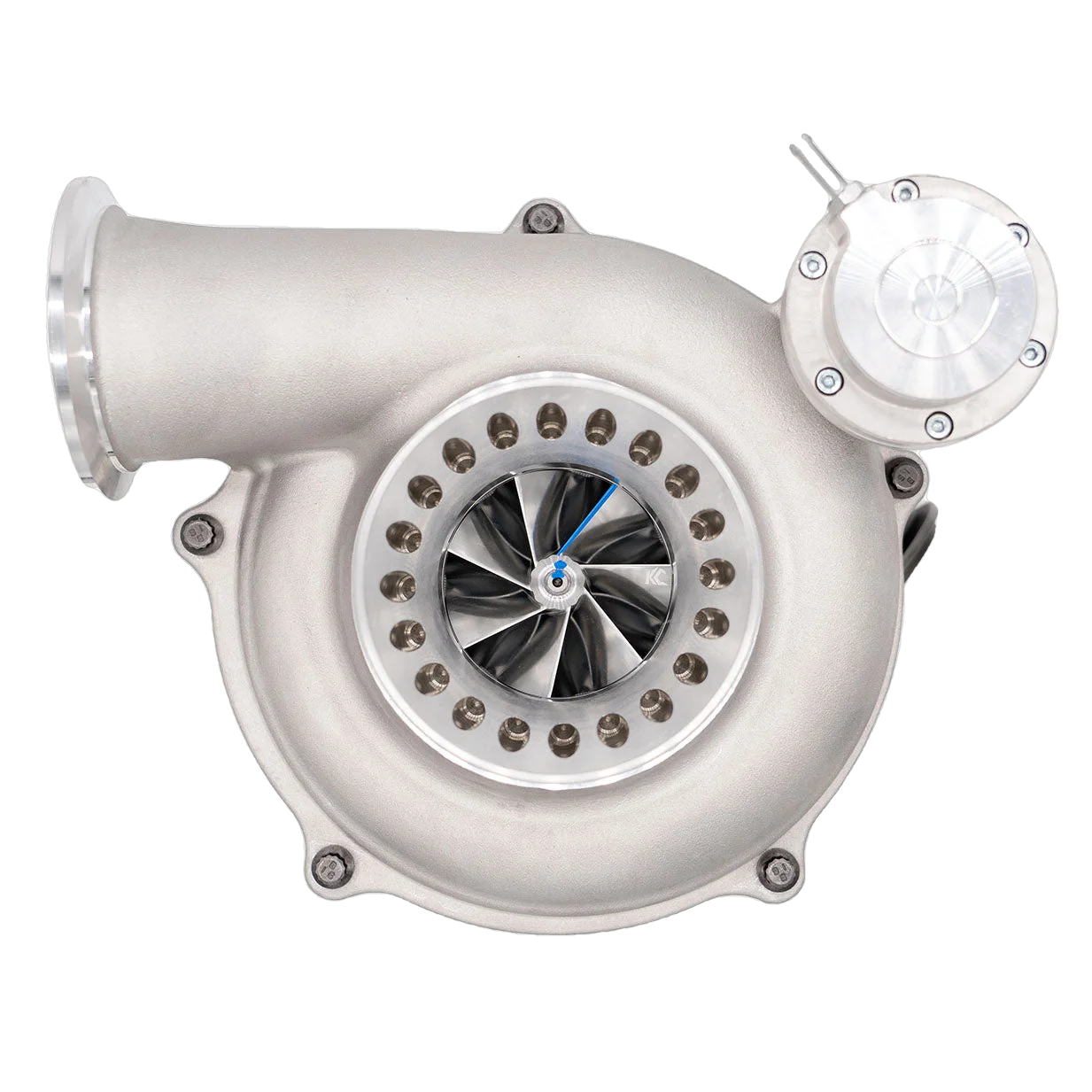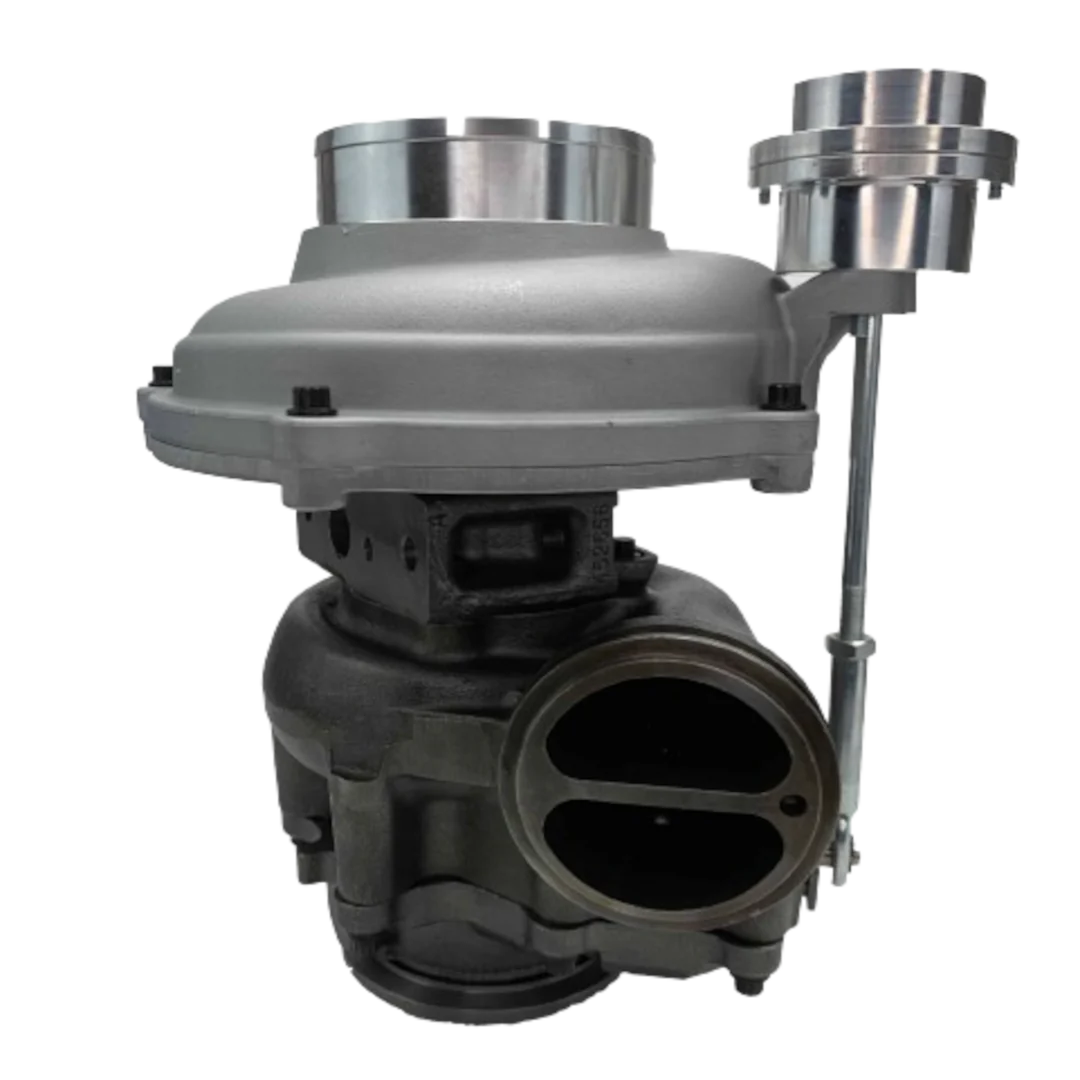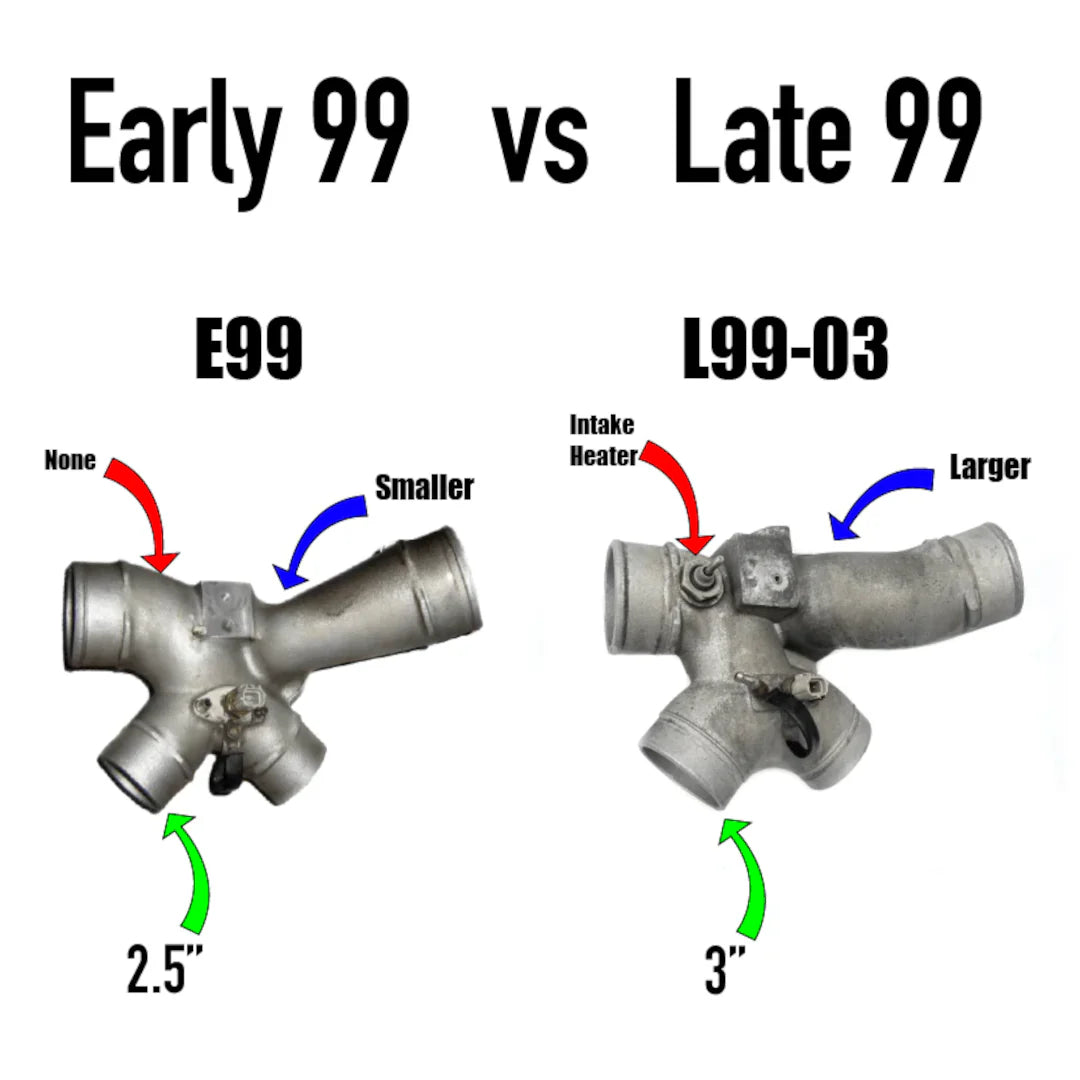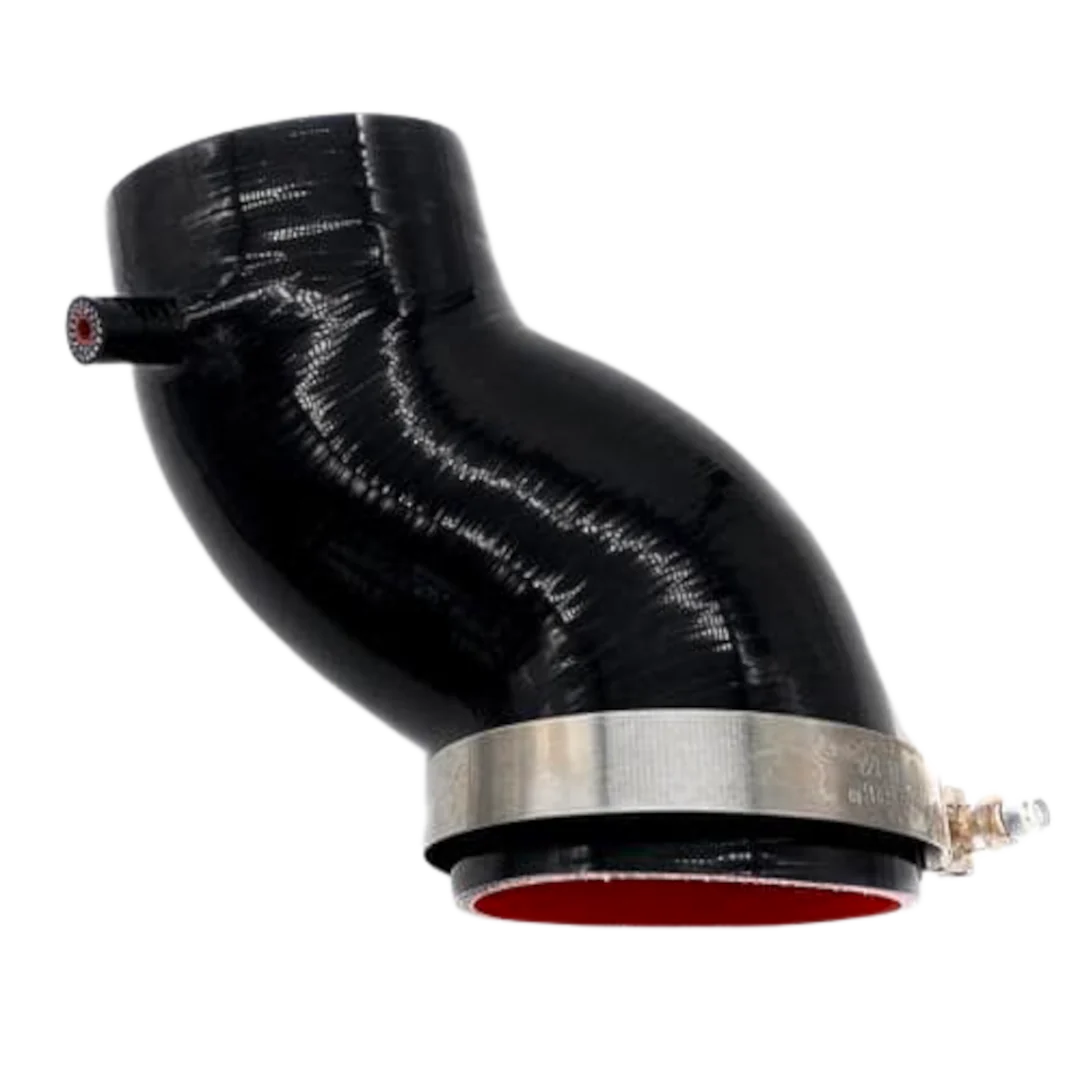KC300x Stage 3 Turbo (66/73) - 7.3 Powerstroke (L99-03)
KC300x Stage 3 Turbo (66/73) - 7.3 Powerstroke (L99-03)
Couldn't load pickup availability
KC300x Stage 3 L99
Gen 2
Supports: Up to 238cc/80% injectors
Features & Details:
- Powder Coating can take up to 3 weeks before it ships
- 100% drop in turbo (no modifications required)
- 66mm 7x7 SXE style compressor wheel with extended tip technology
- 73mm SXE style turbine wheel
- 4" ported compressor housing with drilled anti-surge for high flow
- High Flow Non-EBPV outlet flange
- Adjustable Wastegate Actuator for increased boost control
- Upgraded 360 Thrust Journal Bearing Design
- Comes with all gaskets and o-rings to install
- Comes with new 4" intake boot
Description:
Unlock the full potential of your 7.3 Powerstroke with the KC300x Stage 1 66/73 Gen 2 Turbo—designed for better flow, quicker spool, and increased power. 🔥💨 Featuring a 4” ported housing with drilled anti-surge, a 66mm 7x7 SXE-style compressor wheel with extended tip technology, and a 73mm SXE-style turbine wheel, this drop-in journal bearing turbo is a reliable and proven upgrade for your truck.
You’ll be amazed at how much this turbo wakes up your 7.3! We've torture-tested it for durability, proven its capability on the dyno, and pushed it to the limit at the race track. For high-RPM power and lower EGTs above 3000 RPM, the 1.0 A/R housing is the way to go. If you're looking for quicker spool and cooler EGTs below 3000 RPM, the .84 A/R housing is perfect for daily driving and towing.
This turbo is not ideal for heavy towing. If you need a turbo that can handle heavy towing while still delivering a significant performance boost, check out the OBS KC300x Stage 2!
**EXHAUST BRAKES: Using the exhaust brake can be hard on both the turbo and motor and is not recommended. While you will retain the OEM feature, given appropriate calibration and setup, there can be clearance issues which cause damage to the turbine wheel as well as the brake hindering performance. Exhaust brakes often use a gate which close to increase back pressure and aid in braking. This back pressure can also cause issues with the turbo.**
Share








